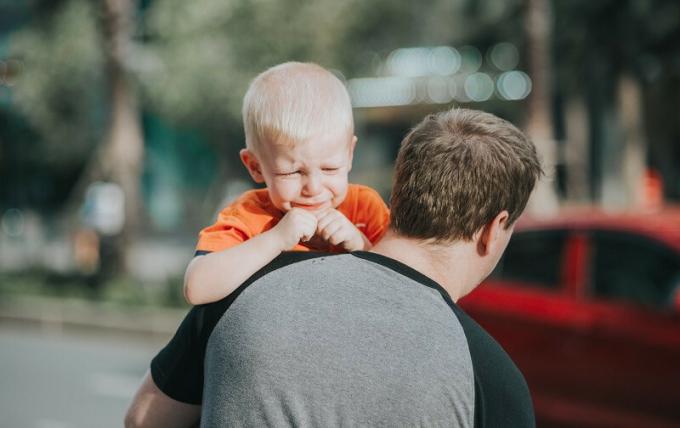What is trauma and what technique is the most effective to heal it?
Psychological trauma is a very painful experience that the person experiences and that exceeds their ability to understand it, give it meaning and integrate it.
Here we will see what this destabilizing psychological phenomenon consists of and how it can be treated in therapy.
- Related article: "Types of Anxiety Disorders and their characteristics"
Trauma by excess or by defect adult or child
The trauma can be due to excess or defect, adult or child. When we speak of childhood excess trauma we speak of traumatic experiences that have to do with physical or emotional abuse (hitting, yelling, hateful glances ...) or sexual abuse.
Also included are events such as witnessing domestic violence and abuse and others that have to do with the breakup between the child and her primary caregiver, such as divorce, serious illness, or death of him. On the other hand, if there is childhood defect trauma, this has to do mainly with physical or emotional neglect.
Examples of this would be showing little or no emotional availability to listen to the child's emotions, not feeding or drinking, etc.
Adult excess trauma is exactly the same as childhood trauma, but occurs in adulthood, such as when we have a partner who assaults us physically or verbally. To these are added bullying, death of a family member or close friend, breakups in couples traumatic events, car or plane accidents, earthquakes, attacks, unpleasant experiences with animals or insects ...
On the other hand, adult default traumas follow the same line, only that they occur in adulthood or old age, and they have to do with certain people who lack empathy, do not tune in to our emotions or needs.
The hidden trauma
There is a special type of trauma, called hidden trauma, that originates in childhood and has to do with when the child's body produces emotions (sadness, fear, anger, joy ...) that need to be attended by a caregiver.
Said trauma refers to the inability of the caregiver (father, mother, grandparents ...) to take care of the child's emotions. For example, we might find a girl who felt very sad and lonely at home because her parents had lost her little brother, or even another relative. The parents' own sadness prevented them from taking charge of that girl's discomfort.
This girl, when she is an adult, continues to feel alone even surrounded by people, she even has a panic that others will leave (breakups, deaths ...). In addition, she has no control over sadness and other emotions, she feels them with too much intensity and with very sudden changes in mood... because her primary caregivers could not teach her to manage them.
In the most serious cases of hidden trauma, an attachment figure can cause traumatic experiences in the child if he / she presents depression, chronic out of tune with the child's emotions, anger, withdrawal of affection, provocation of guilt, emotional blackmail, double messages, gestures of contempt, silences that ignore...
As an example, we could talk about people with more serious disorders, such as obsessive disorders (many thoughts), eating disorders (anorexia, bulimia, binge eating ...) or personality disorders (borderline, avoidant, narcissistic…).
- You may be interested in: "What is anxiety: how to recognize it and what to do"
Pre-verbal trauma
Another type of trauma is pre-verbal trauma. It is based on childhood memories based on emotional states without images and contains emotions such as loneliness and fear. It usually has to do with bodily experiences.
What happens in these cases is that children usually do not have enough cortical consolidation to be able to store memories explicitly, so are stored implicitly.
As an example, we have people who feel a bodily discomfort that has no medical explanation. They are emotions that cannot be expressed and that remain stored in the body (panic or anxiety attacks, hypochondria, headaches, muscle aches, chronic stress, feeling of chronic fatigue, fibromyalgia...).
- Related article: "Child therapy: what is it and what are its benefits"
The trauma of betrayal
The betrayal trauma has to do with when the person loses trust in the people or organizations that are supposed to protect them. A sexual abuse by a caregiver is an example of this. Anger is a central emotion in this type of trauma.
Another example is when an abused woman asks the agencies for help and they do not believe her. Or when a person with an eating disorder suffers a very complicated income that leads to experiencing very unpleasant situations (feeding tube, little care by staff sanitary…).

- You may be interested in: "Parental neglect: causes, types and consequences"
What happens when we don't heal the trauma and let it go?
Trauma, like infected wounds, remains like an open wound, constantly oozing pus. Therefore, to close it, all that infection must be removed, curing it properly. When trauma becomes entrenched and not processed, it can pass into the body, as in the case of pre-verbal trauma, becoming increasingly difficult and time consuming for your work.
What's more, any event having to do with the original trauma will further open the wound. For example, consider a girl who was bullied because she was overweight. Years later, she meets a couple who begin to criticize her for her physical appearance.
This adult is feeling the pain of this couple's criticism added to the initial pain, causing her symptoms of anxiety, sadness, depression or insomnia or even the development of worse symptoms or conditions, such as anorexia or bulimia. Anorexia, on some occasions, is used as an instrument to overcome the belief that "I'm not worth it, I don't like myself" and if I am thin, I think they will accept me.
- You may be interested in: "Post Traumatic Stress Disorder: Causes and Symptoms"
What is the most effective technique currently for dealing with trauma?
At Vínculo Psicología we use the EMDR technique. It is a psychological technique that is based on neuroscience, that is, in how the brain processes information. The acronym EMDR stands for Eye Movement Desensibilization and Reprocessing.
Who named this type of technique? It was Francine Shapiro who coined the term EMDR in 1978.
EMDR therapy has a scientifically proven high efficacy. It is used to treat different traumas (losses, accidents, mistreatment, sexual abuse ...), but also other difficulties such as chronic stress, conciliation insomnia or maintenance, anxiety, depression, fears, phobias, low self-esteem, emotional dependence, obsessions, problems in interpersonal relationships, conflicts of couple...
The EMDR it works by "unblocking" certain traumatic or painful memories that contain emotions that our brain was unable to process in different stages of our life. These memories and their emotions are trapped in the right hemisphere and cannot be "digested" by the left, which is in charge of translating into words and giving meaning to what has happened to us.
EMDR is applied by performing bilateral ocular stimulation to the patientThat is to say, he looks from right to left with his eyes a finger, the light of a machine; or hear sounds in one ear or the other that make you move your eyes; or it can be applied with light taps on each of her shoulders (tapping) that also make her move her eyes from one side to the other. As the eyes move from left to right and vice versa, reprocessing of the memory and emotions that get stuck in one hemisphere (right), and flow to the other freely (left).
This causes the tension, symptoms or nervousness of the patient to disappear as we work through the sessions. In addition, EMDR also emphasizes the limiting beliefs that that person had to learn when they suffered the trauma.
Following the example we talked about previously, a person who has suffered the contempt of her parents, or who has lived with a parent with low self-esteem, may begin to develop the belief of "no I'm worth it ”.
In addition to the above, If this person is bullied or comes across partners who criticize her physical appearance, the belief will gain more weight and cause more symptoms (anxiety, depression, low self-esteem, emotional dependence ...). Once we process the traumas, we also change these beliefs for more adjusted ones, such as, in this In any case, the “I am worth it”, since what my classmates did to me no longer hurts, it has already been reprocessed.

